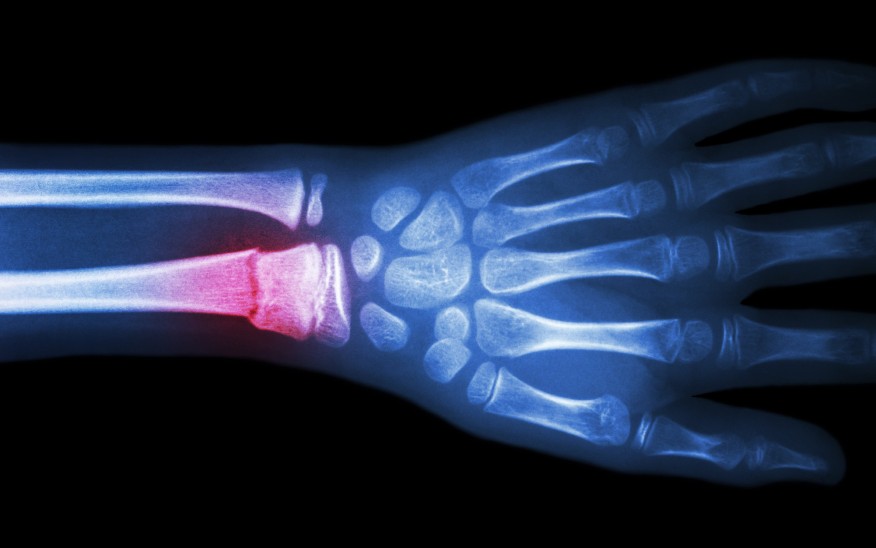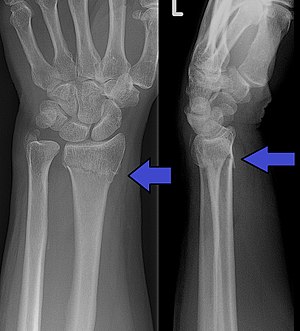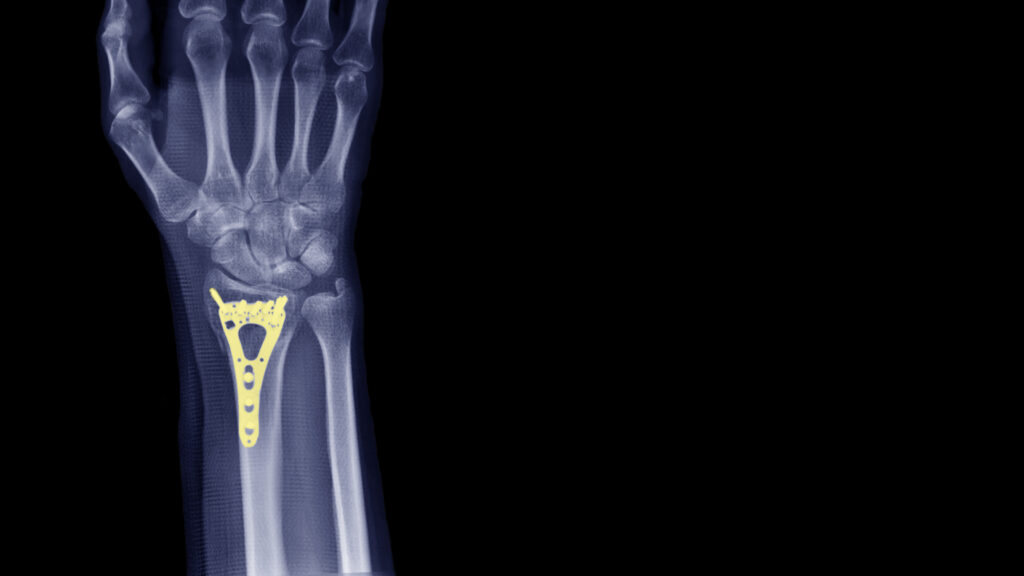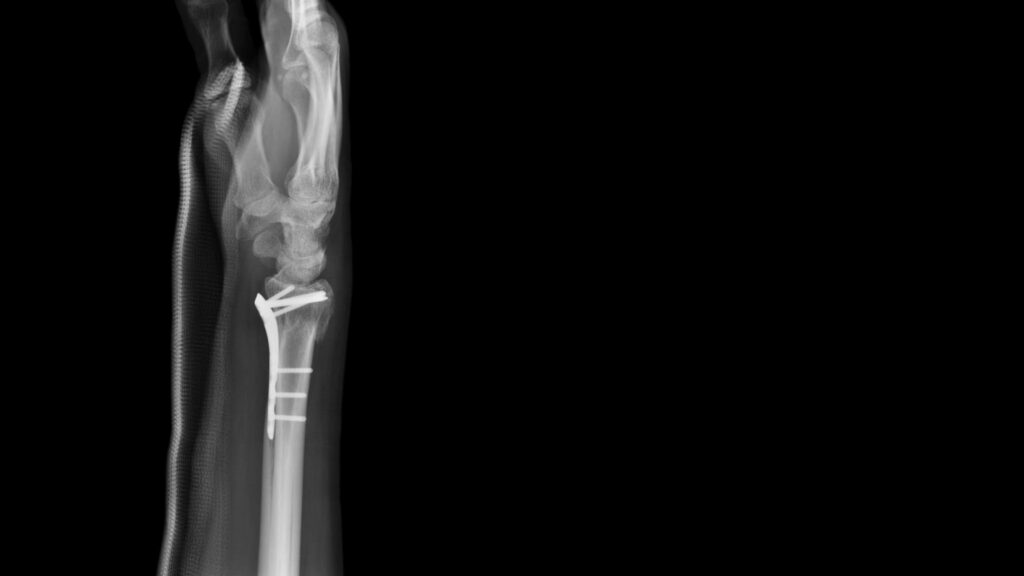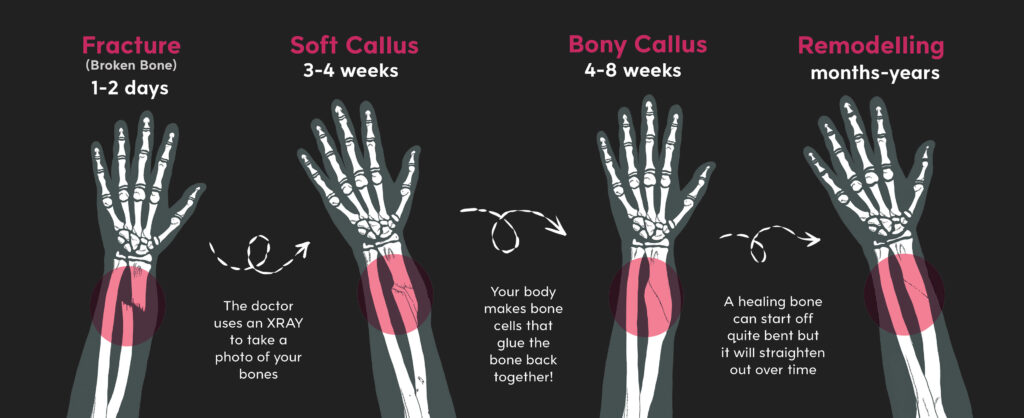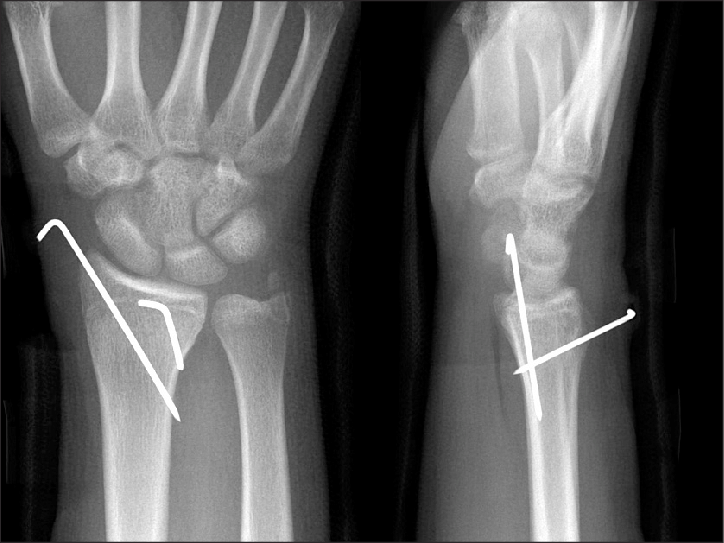Conservative Treatments
The most conservative form of treatment for a distal radius fracture is simply immobilization with a static cast. This is typically worn for 6 weeks or until the doctor determines that the fracture is healed. It’s encouraged for the individual to keep their fingers moving as much as the cast will allow so that the tendons can remain mobile. This helps with the recovery process once the wrist is able to be moved safely after 6 weeks. Skilled therapy is encouraged to ensure proper recovery of strength and range of motion for the wrist and hand. The wrist needs to be stretched several times a day after the cast is removed to ensure an efficient recovery.
Surgical Intervention
If the fracture is severe enough and can’t be reduced (set) conservatively, there are two very common methods utilized by orthopedic surgeons. These two methods are Open Reduction Internal Fixation (ORIF), or percutaneous pinning.
ORIF is when a plate is attached to the bone with screws. The benefits to the ORIF is that typically you can start GENTLY moving the wrist one or two weeks after the procedure which results in better active motion of the wrist and digits around the time the bone is determined to be healed enough to begin more aggressive stretching (4-6 weeks) and strengthening (6-8 weeks). Sometimes the plate is removed after the bone is healed sufficiently.
Percutaneous pinning is a temporary application of hardware to stabilize the bone until it’s healed sufficiently. The pins are typically removed around 4-6 weeks after the procedure if the bone is sufficiently healed. It’s important to keep the wrist stabilized until determined that the fracture is healed well enough to begin moving the wrist.
With percutaneous pins, it’s important to ensure that there is no infection, because the pins do protrude through the skin, or they are very close to the surface of the skin. It’s important to call your doctor if you experience excessive redness, numbness, drainage (pus), excessive numbness, or a fever above 100 degrees. Keeping the sites clean every day helps prevent infection or complications.
